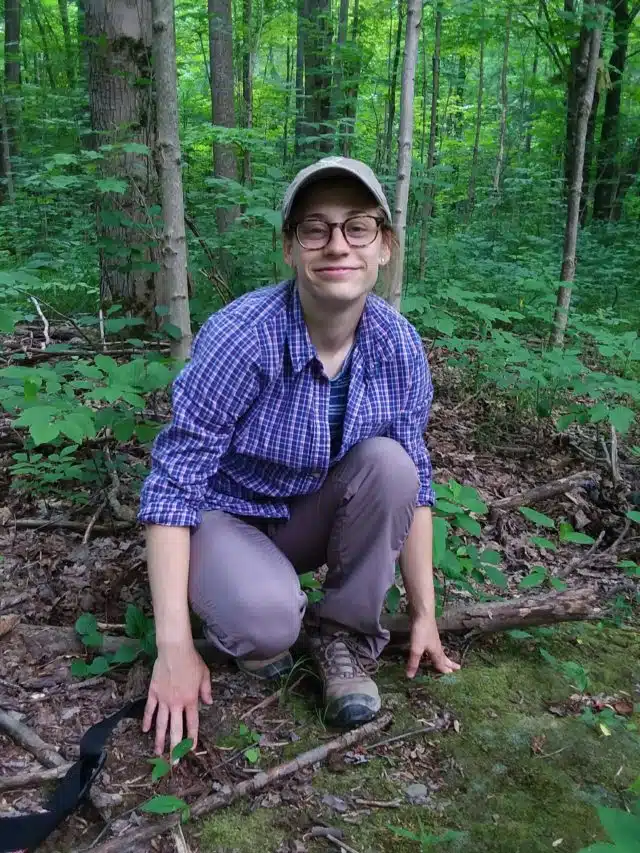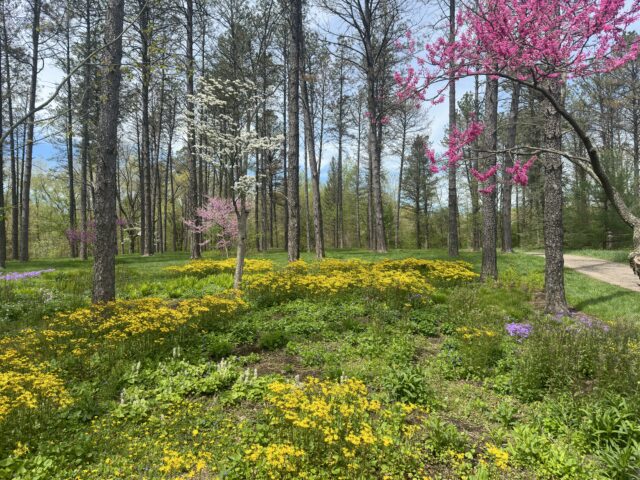
Ohio’s forests have changed over the last 200 years. Few old-growth forests remain as much of the land was timbered and cleared for agriculture in the early 19th century. Most forests in the northeastern U.S. sit on land used for agriculture as recently as 40 to 85 years ago. After years of disturbance from farming activities, there are challenges for forests trying to regenerate. These young forests tend to have high numbers of introduced species (originating from other parts of the world) that compete with native species. They also tend to be crowded with smaller trees which happens when many trees began growing all at the same time. To restore the historic integrity of these forests, forest managers remove non-native plants while thinning dense tree stands through timbering. These management actions aim to improve the health of the forest and increase their ability to act as ecosystem superheroes – combating climate change by storing carbon, protecting biodiversity by providing habitat for wildlife, and improving water quality by regulating rain water.
A key component of forest health is biodiversity that is upheld, in part, by critical interactions between plants and animals. For example, frugivory (fruit consumption) provides food for animals, while simultaneously moving seeds around the forest. While birds and small mammals can rely on these plants for energy, fruit-producing shrubs rely on animals for the dispersal of their seeds.
I am a graduate student hosted jointly by the Holden Arboretum and Case Western Reserve University. I study how forest management can create healthier forests by studying the relationships between forest plants and animals. My research takes place in the “Working Woods” – an experimental forest at the Holden Arboretum that serves as a living laboratory in which we study of forest management.
In the Working Woods, we explore how to “work the woods,” into a more healthy and functioning forest. We’re working with the HF&G Conservation department to do this by thinning canopy trees and removing nonnative shrubs in this young forest on lands previously used for agriculture. This management will alter resources that are both living, such as plants and animals present, and non-living, such as light and temperature within the forest landscape, changing the plants and animals that exist in the forest.
This summer, my research has me practicing my science and cooking skills! In order to investigate how management may affect dispersal of native and introduced shrubs across Working Woods, I am making artificial edible fruits made from a mixture of butter, flour, gelatin and food coloring to test which fruits are most likely to be dispersed by birds. These clay-like fruits are similar to Play-Doh – moldable, yet hold their shape. Like many other homemade recipes, the fruit making process starts with a mixture of dry than wet ingredients. Then I melt the clay-like substance over a hot water bath before coloring and molding into these fruit mimicking swindlers!

These plants rely heavily on birds to disperse their seeds, therefore knowing what fruit will be eaten can guide restoration plans. Across Working Woods forest management treatments, I am offering red and blue edible fruit-mimics hung in branches on metals hooks, and recording which ones have beak marks. I also manipulate the number of fruits that I present at a time – hanging either a small number of fruits, or many fruits together. This will allow me to test if fruit is more attractive in higher numbers.
Forest management will alter available resources, fruit production, and important bird habitat. This can change patterns of seed dispersal in forests, influencing which plants occur where. Understanding how plants and animals respond to land management while simultaneously interacting with one another can help predict the future of forest communities and inform management plans.

Alexa Wagner
PhD Candidate











